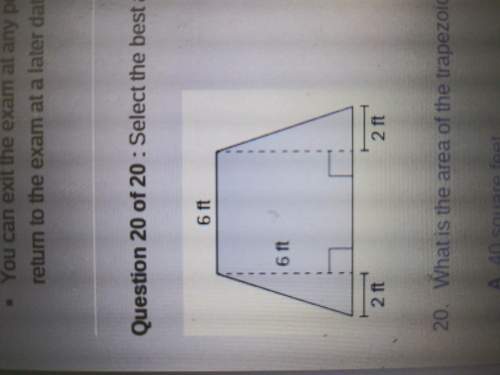
Mathematics, 15.07.2021 16:30 mrtroll3289
Generally speaking, would you say that most people can be trusted?A random sample of n1=244 people in Chicago ages 18-25 showed that r1=43 said yes. Another random sample of n2=271 people in Chicago ages 35-45 showed that r2=71 said yes. Does this indicate that the population proportion of trusting people in Chicago is higher for the older group? Use α=0.01.1 - What is the level of significance?2 - State the null and alternate hypotheses. CHOOSE ONE. a) H0:p1=p2; H1:p1≠p2.b) H0:p1p2.3 - What sampling distribution will you use? What assumptions are you making? CHOOSE ONE. a) The standard normal. We assume the population distributions are approximately normal. b) The standard normal. The number of trials is sufficiently large. c) The Student's t. The number of trials is sufficiently large. d) The Student's t. We assume the population distributions are approximately normal.4 - What is the value of the sample test statistic? (Test the difference p1−p2. Do not use rounded values. Round your final answer to two decimal places.)5 - Find (or estimate) the P-value. (Round your answer to four decimal places.).6 - Sketch the sampling distribution and show the area corresponding to the P-value.7 - Based on your answers in parts (a) to (c), will you reject or fail to reject the null hypothesis? Are the data statistically significant at level alpha?a) At the α=0.01 level, we reject the null hypothesis and conclude the data are statistically significant. b) At the α=0.01 level, we fail to reject the null hypothesis and conclude the data are not statistically significant. c) At the α=0.01 level, we reject the null hypothesis and conclude the data are not statistically significant. d) At the α=0.01 level, we fail to reject the null hypothesis and conclude the data are statistically significant.8 - Interpret your conclusion in the context of the application. CHOOSE ONE. a) Reject the null hypothesis, there is insufficient evidence that the proportion of trusting people in Chicago is higher in the older group. b) Reject the null hypothesis, there is sufficient evidence that the proportion of trusting people in Chicago is higher in the older group. c) Fail to reject the null hypothesis, there is sufficient evidence that the proportion of trusting people in Chicago is higher in the older group. d) Fail to reject the null hypothesis, there is insufficient evidence that the proportion of trusting people in Chicago is higher in the older group.

Answers: 2


Another question on Mathematics

Mathematics, 21.06.2019 21:20
Paul’s car is 18 feet long. he is making a model of his car that is 1/6 the actual size. what is the length of the model?
Answers: 1

Mathematics, 22.06.2019 01:30
Fill in the missing exponents in each box and show how you found the answer. (4 points: 2 points for each correct answer with work shown) c. (9^4)^? =9^1 d.(5^? )^3=5^1 *question marks represent the boxes
Answers: 3

Mathematics, 22.06.2019 03:30
Simplify the expression 8h - 57-3m by adding or subtracting the like term
Answers: 1

Mathematics, 22.06.2019 04:00
2pointswhat is the best next step in the construction of the perpendicular bisector ofab?
Answers: 3
You know the right answer?
Generally speaking, would you say that most people can be trusted?A random sample of n1=244 people i...
Questions


Mathematics, 04.08.2019 07:00

Mathematics, 04.08.2019 07:00

History, 04.08.2019 07:00







History, 04.08.2019 07:00

Social Studies, 04.08.2019 07:00

History, 04.08.2019 07:00

History, 04.08.2019 07:00


Mathematics, 04.08.2019 07:00









